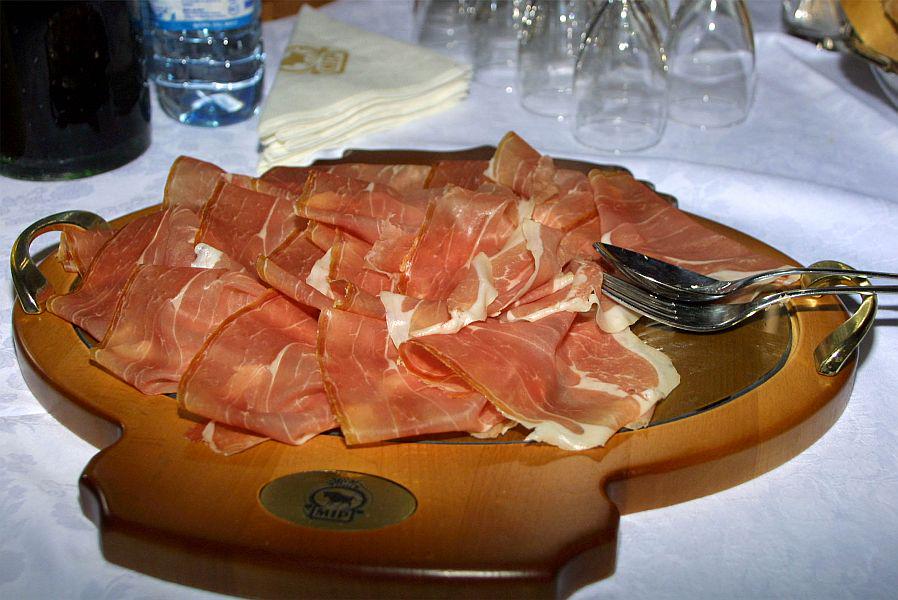
Slovenia’s Karst prosciutto (kraški pršut) is not nearly as famous as its Italian counterpart, but it is just as highly prized by gourmets and is increasingly being promoted as one of the country’s culinary treasures.
It is the environment of southwestern Slovenia that gives the ham its unique flavor. The rugged Krast plateau serves as the boundary between the climates of the Mediterranean and Inland Slovenia, while the topography of the area gives birth to a strong, dry wind known as a the Bora. Real Karst prosciutto is dried for several months in an environment that is found nowhere else on earth. The result is a tender, flavorful ham with a distinctive aroma.
In order for a ham to be sold as the Karst prosciutto, it needs be dried naturally for at least 12 months. For several varieties, the process takes even longer. Crucially, the prosciutto must also contain traditionally produced salt from the Sečovlje Salt Pans on Slovenia’s Adriatic coast, a type of salt renowned for its quality.
The tradition of making Karst prosciutto is an old one. According to historians, it probably dates back to the time when the Karst plateau was first settled. Its popularity increased when a railroad connected the nearby city of Trieste with Vienna and the Karst hams could be distributed throughout the Austrian Empire.
In 2012, Karst prosciutto was recognized by the European Commission as a product with a designated origin. The classification means that only those hams produced using traditional methods can be marketed as authentic Karst prosciutto. Local producers hope the recognition will help them to market their hams abroad and, one day, even compete with the more established Italian varieties. Meanwhile, the increasing popularity of the delicacy, which has been featured in a number of international publications, is already drawing tourists to small farms in the region, helping Slovenia to develop farm tourism – now a booming sector in an otherwise sluggish economy.

































































